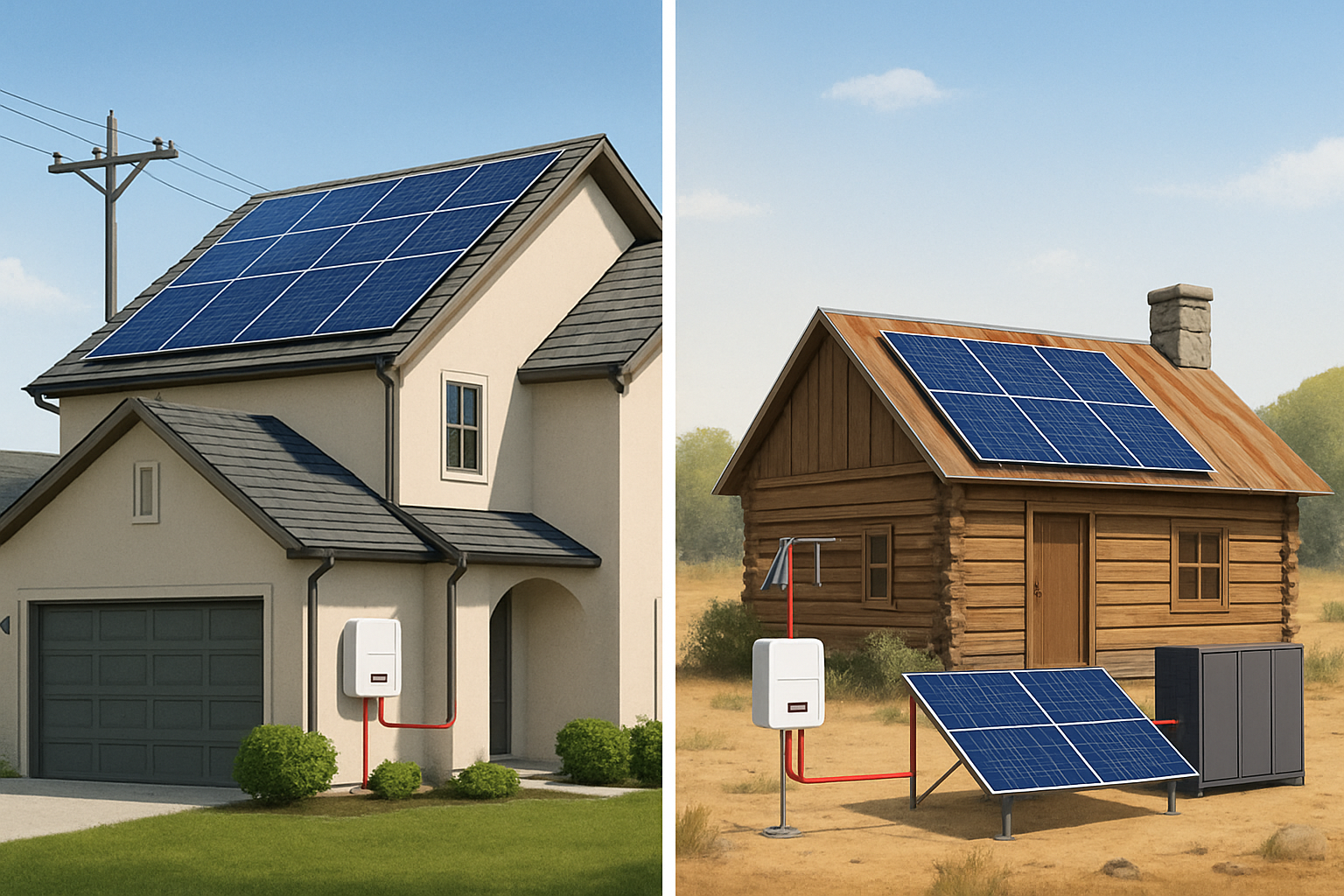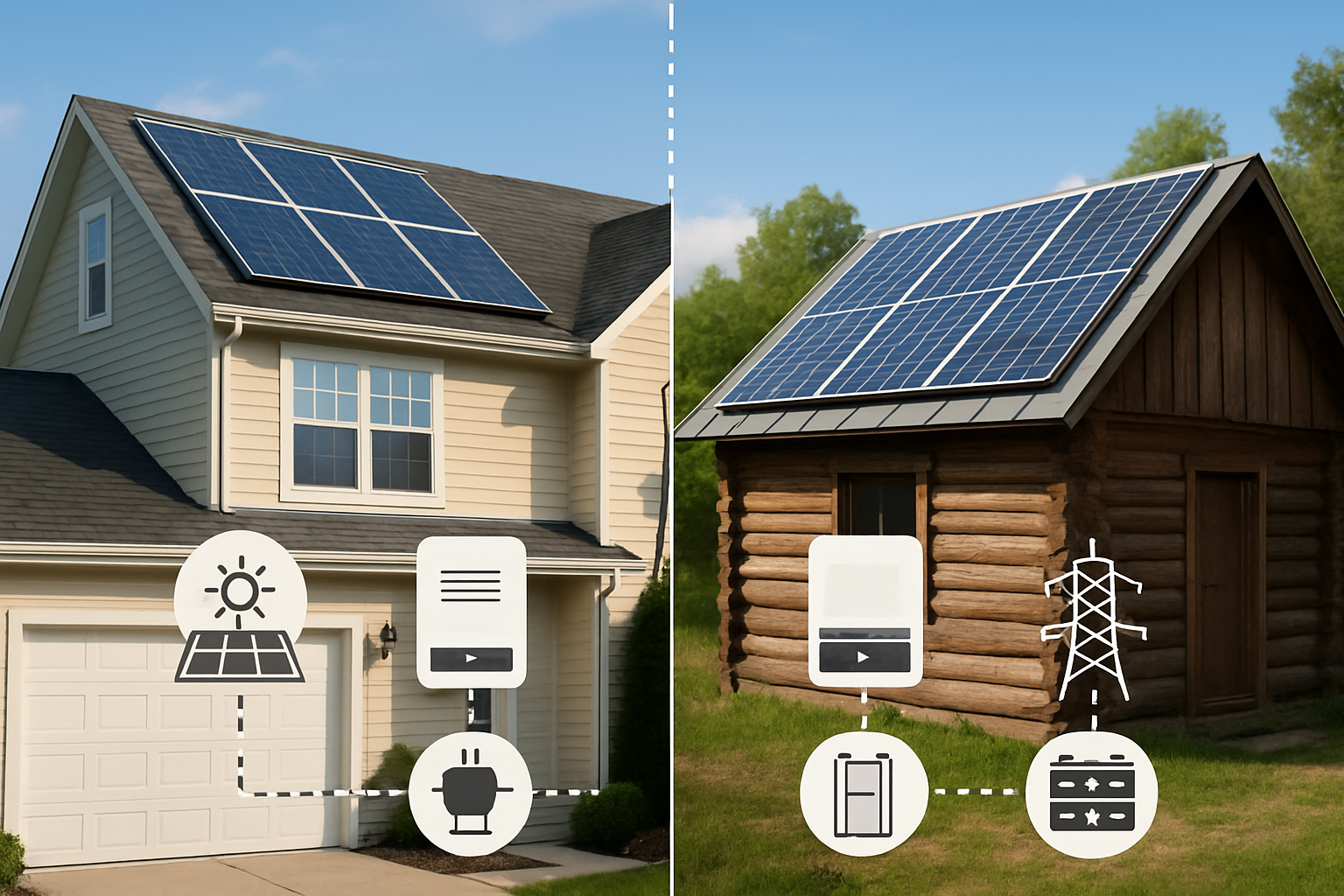Achieving control over your power supply is no longer a distant dream. Home energy storage systems have made it possible to generate, store, and use your own electricity. At the heart of this revolution is the lithium-ion solar battery, a technology that offers a reliable path to energy independence. Whether you are considering a completely self-sufficient off-grid solar system or a more resilient grid-tied solar system, understanding the battery's role is crucial.
The Core of Modern Solar Systems: The Lithium-Ion Battery
Modern solar installations rely on advanced battery technology to function effectively. The battery stores excess energy generated during peak sunlight hours for use at night or on overcast days. Among the available options, lithium-ion chemistries, particularly the lithium iron phosphate battery (LiFePO4), have become the standard for performance and safety.
Why LiFePO4 Excels for Energy Storage
A LiFePO4 battery offers significant advantages over traditional lead-acid batteries. Its chemical structure provides greater thermal and chemical stability, making it a safer choice for a home battery storage system. Key benefits include a longer lifespan, higher efficiency, and a greater depth of discharge (DoD), which means you can use more of its stored energy without damaging the battery. A typical 12 volt 100ah lithium battery provides consistent power output across its discharge cycle.
| Feature | Lithium Iron Phosphate (LiFePO4) | Sealed Lead-Acid (SLA) |
|---|---|---|
| Typical Cycle Life | 3,000 - 7,000 cycles | 300 - 1,000 cycles |
| Depth of Discharge (DoD) | 80-100% | 50% |
| Round-Trip Efficiency | 92-98% | 75-85% |
| Maintenance | None required | Regular checks may be needed |
Key Performance Metrics You Should Know
To evaluate a lithium battery pack, you should familiarize yourself with a few performance metrics. The Depth of Discharge (DoD) indicates the percentage of the battery that has been discharged relative to its total capacity. A higher DoD means you can use more of the battery's stored power. The C-rate measures how quickly the battery can be charged or discharged. As detailed in the Ultimate Reference for Solar Storage Performance, understanding these metrics helps you select a battery that matches your energy demands. For instance, a battery with a 1C rating can deliver its full capacity in one hour.
Lithium Batteries in Action: Grid-Tied vs. Off-Grid Systems
A lithium-ion solar battery serves different but equally important functions in both grid-tied and off-grid configurations. Its integration determines your level of energy independence and resilience.
Achieving True Autonomy with Off-Grid Solar Systems
In an off-grid solar system, the battery is not just for backup; it is your primary source of power when the sun isn't shining. A robust deep cycle lithium battery bank, perhaps composed of multiple 12v 100ah LiFePO4 lithium battery units, ensures a stable and continuous electricity supply. This setup is ideal for remote homes, cabins, or any location where grid access is unreliable or unavailable. The long cycle life of a lithium phosphate battery makes it a durable and cost-effective core for these systems.
Enhancing Grid-Tied Systems with Battery Storage
For homes connected to the utility grid, adding a lithium battery storage solution creates a hybrid system. This configuration offers the best of both worlds. During the day, you use solar power directly, and any excess energy charges your battery instead of being sent back to the grid for minimal compensation. When evening comes, you draw power from your battery. This maximizes self-consumption and reduces your reliance on the utility. Furthermore, during a power outage, your system can seamlessly switch to battery power, keeping your essential appliances running.
Sizing Your Lithium Battery for Energy Independence
Properly sizing your battery bank is one of the most critical steps in designing a solar energy storage system. An undersized system will lead to power shortages, while an oversized one results in unnecessary expense.
Calculating Your Daily Energy Needs
Start by conducting an energy audit. List all the electrical appliances you intend to power and estimate their daily hours of use. Multiply each appliance's power rating (in watts) by its usage hours to find its daily energy consumption (in watt-hours). Summing these values gives you your total daily energy requirement. This figure is the foundation for determining the capacity of your battery bank, whether you need a 12v 50ah lithium battery for a small setup or a larger 48v LiFePO4 battery for a whole house.
Planning for Autonomy and System Inefficiencies
For off-grid systems, you must plan for 'days of autonomy'—the number of consecutive cloudy days your system can sustain power without any solar input. A common recommendation is two to three days. You also need to account for system inefficiencies. Inverters, wiring, and the battery itself have energy losses. It's wise to add a buffer of about 20% to your total capacity calculation to ensure reliability.
The Financial and Practical Aspects of Solar Battery Independence
Investing in a solar battery system is a significant financial decision. However, looking beyond the initial lithium-ion battery price reveals substantial long-term value and operational benefits.
Long-Term Value Beyond the Initial Cost
While the upfront cost of a 12 volt 100ah lithium battery is higher than its lead-acid equivalent, its extended lifespan and superior performance result in a lower total cost of ownership. According to the International Energy Agency (IEA), battery costs have fallen dramatically over the past decade, making home energy storage more accessible. The durability of a lithium rechargeable battery means you won't need to replace it for many years, offering predictable energy costs and protection from volatile utility prices.
Maintenance and Operational Considerations
One of the most practical advantages of LiFePO4 batteries is that they are virtually maintenance-free. Unlike flooded lead-acid batteries, they do not require regular watering or equalization charges. This 'set it and forget it' characteristic makes them a convenient and hassle-free solution for any homeowner seeking energy independence.
A Future-Proof Energy Solution
Choosing a lithium-ion solar battery is more than just an equipment purchase; it's an investment in a secure and independent energy future. This technology empowers you to take control of your electricity supply, reduce your environmental impact, and gain peace of mind. As residential energy storage becomes more common, systems built around a high-quality 12v LiFePO4 battery will continue to provide lasting value and reliability for years to come.
Frequently Asked Questions
How long does a lithium-ion solar battery last?
A high-quality LiFePO4 solar battery is typically rated for 3,000 to 7,000 charge cycles. With one cycle per day, this translates to a lifespan of 10 to 20 years, significantly longer than traditional battery types.
Can I add a battery to my existing grid-tied solar system?
Yes, in most cases, you can add a lithium battery to an existing grid-tied solar installation. This process, often called AC coupling, involves adding a battery and a compatible inverter. It allows you to store excess solar energy for later use, increasing your self-sufficiency.
Is a 100Ah lithium battery enough for a small home?
A single 12v 100ah lithium ion battery provides approximately 1.28 kilowatt-hours (kWh) of energy. This may be sufficient for a small cabin or RV with minimal loads but is generally not enough for a typical home. Most home battery storage systems require several batteries connected together to meet daily energy needs.





Leave a comment
All comments are moderated before being published.
This site is protected by hCaptcha and the hCaptcha Privacy Policy and Terms of Service apply.